2021 Ford Explorer XLT Review: Bringing the Team Together

FAST FACTS
| Engine: | 2.3L I4 Turbo |
| Output: | 300 hp, 310 lb-ft |
| Transmission: | 10AT, AWD |
| US fuel economy (MPG): | 20/27/23 |
| CAN fuel economy (L/100KM): | 11.7/8.6/10.3 |
| Starting Price (USD): | $38,799 (XLT, inc. dest.) |
| As-Tested Price (USD): | $47,185 (inc. dest.) |
| Starting Price (CAD): | $47,664 (inc. dest.) |
| As-Tested Price (CAD): | $54,964 (inc. dest.) |
There is a parking spot’s amount of stuff lying beside the SUV.
Four of us are trying to determine how we’re going to fit everything into the 2021 Ford Explorer. It’s the last week of summer, but more importantly, it’s my cousin’s bachelor party. A Marvel fan to the very core, he’ll face six different challenges over the next 48 hours to win his own Infinity Stones, and the first one is staring him down in a Toronto underground parking garage. We—okay, mostly him, but the co-best men and I are here for support—need to fit three golf bags, a TV and some video game systems, food and drinks for nine, and all the other accessories needed for a weekend in cottage country.
Get a Quote on a New Ford ExplorerThe process is neither fast nor pretty, but eventually, the Explorer is packed to the rafters. Space stone duly earned, the man of the weekend installs himself into the front seat as the best men get into the second row, a wall of stuff separating them. The Explorer has passed its first test, too. Ford’s three-row is a spacious, comfort-first hauler, and while it has its foibles, the big SUV will end up ably handling everything the team asks of it over the next 350 miles.
What’s new?
Ford re-did the Explorer for the 2020 model year, so not much has changed for its sophomore year. It rides on the same CD6 platform as the Lincoln Aviator, which makes it one of the rare rear-drive-based options in the non-premium three-row segment. This one is all-wheel drive, which is your only choice if you live in the land of maple syrup.
Despite the platform change, the current Explorer still looks similar to the previous one. It’s appropriately chunky, with rough-and-tumble black cladding and that traditional reverse-rake C-pillar tying the design to the original. An optional appearance package swaps out some of the brightwork for more subtle trim, and fits larger 20-inch alloy wheels.
The base engine, and the one found here, is a 2.3-liter EcoBoost four-cylinder. The important figures are 300 (horsepower), 310 (pound-feet), and 87 (octane; yep, it’ll drink down the regular stuff). Ford offers a few other engine choices too, including a nat-asp 3.3-liter V6 hybrid, and the 3.0-liter EcoBoost V6 in various states of tune. XLT models like this—plus the new Timberline—are limited to just the four-pot.
A seven-seat setup with second-row bench is standard, with captain’s chairs optional.
Interior and comfort
When it isn’t loaded up with all manner of stuff, the Explorer has almost echo-worthy amounts of space. The front seats are large and a little flat, but they prove comfortable on the multi-hour trek out of the city (thanks, Toronto traffic). I heard no complaints about the middle-row seats either; in fact, both of the guys fell asleep at various points, so that’s a good sign in my books. The third row is fine for adults in a pinch, though knees will be high and rubbing on the seat ahead.
The ActiveX seating material isn’t quite convincing as leather. That’s fine: it’s easier to clean, doesn’t use any animal products, and, in two-tone form, pretty good-looking. I wish I could say the same about the dashboard design. The plastics are below-average for the class, and there are some unseemly panel gaps below the infotainment. At least the audio and climate controls are easy to access. The view out is generally good—even when loaded up—but the characteristic C-pillars do cut into the over-the-shoulder view.
If you’re running the Explorer in full three-row mode (something we never had to do during the weekend), there’s 18.2 cubic feet (515 liters) of storage space out back. Drop the third-row like we did, and you’ll find 47.9 cubes (1,356 L); enough for eight golf bags, it turns out. Two-seat mode creates a cavernous 87.8 cu-ft (2,486 L) of space.
Technology and features
Higher-up Explorer trims use the giant, portrait-style touchscreen that’s proliferating across the Ford lineup. This humble XLT sticks to a modest 8.0-inch touchscreen. SYNC3 is as easy to use here as it is elsewhere, though the menu buttons can be a stretch for those not blessed with long arms. The system trades speed for its straight-forward nature, too. Apple CarPlay and Android Auto are both of the tethered variety, and operate without issue. The sound system might only be six speakers, but it was more than enough for us to belt out late ’90s R&B and hip-hop classics on the trip up to the cottage. The XLT also comes with two second-row USB ports, so every one of us was able to climb out with a full charge (so long as we had enough cables).
With it still being shorts weather at the time, there’s little use for the heated seats and steering wheel—optional on XLT in 2020, standard this year. For the sake of testing, I try the seats, and the heating is very effective. The wheel is slower, and only gets to moderately warm.
A powered, height-adjustable liftgate is standard, as are LED headlights. The latter proved useful late into the night, when a particularly competitive spikeball tournament just had to continue. Hey, we won in the end!
Ford’s Co-Pilot360 suite of driver assists comes on every Explorer, bundling automated emergency braking, forward collision warning, lane-keep assist and auto high beams together. Blind-spot monitoring with rear cross-traffic alert is also standard, and Explorers with the towing package get an updated version to account for trailers. This tester also includes the upgraded Assist+ package ($895 / $1000 CAD), which adds adaptive cruise control with stop-and-go, road sign recognition, and voice-activated native navigation.
With the Explorer acting as a mobile base, Ford’s SecuriCode system proved useful. It’s an excellent way for a group to access a car when needed, without having to constantly pass the keys around.
Driving impressions
The suspension tuning is well-judged for the intended purpose. Even on the larger wheels, the Explorer remained cushy on every trip. Wind and road noise are both kept in check. The soft suspension settings do make it lean pretty dramatically in corners, though. I found the brake pedal too squishy for my tastes.
I never troubled the Explorer with serious off-roading, but it did traverse a few slick, lumpy paths. The 7.9 inches (200 mm) of ground clearance kept its side skirts clear of small rocks, and the selectable drive modes (plus hill descent control) kept it sure-footed throughout. It’s here that the Explorer builds confidence, confidence that, if I’m honest, I wouldn’t quite get with other, front-drive-based crossovers.
If you’re looking for a sporty drive in the same form factor, there’s always the Explorer ST.
What’s the competition?
If you’re looking at mainstream three-row crossovers, you’re spoiled for choice. Currently we rate the Hyundai Palisade and Kia Telluride twins very highly. At the price range this loaded XLT plays in (more on that in a little), you’d be eyeing one of the top-shelf trims for the Korean models. Both feature much swankier interiors than the workmanlike Explorer, and they aren’t far behind its 5,300-pound max towing rating (5,000 pounds). Their naturally aspirated V6 engines are thirstier, however, and the Explorer’s rear-drive-based AWD system feels more sure-footed off-road.
SEE ALSO: Hyundai Palisade vs Kia Telluride ComparisonIs space for the whole crew most important? Check out the cavernous Honda Pilot. Trying to save at the pumps? There’s the Explorer hybrid, as well as the Toyota Highlander hybrid. Kia offers its slightly-smaller Sorento in both series and plug-in hybrid forms, too.
Sticking to the domestic teams, the Dodge Durango is a hearty hauler, capable of towing 6,200 lb with V6 models. The R/T Tow N Go we recently tested swells that figure to a huge 8,700 lb, a best-in-class rating. That pushes the Durango clear past the Explorer’s price though, and ends up in the territory of the truck-based Chevy Tahoe and GMC Yukon.
SEE ALSO: 2021 Dodge Durango R/T Tow N Go Review: Big Red DinosaurHow much are we talking, here? The as-tested sticker for this 2021 Ford Explorer XLT is $47,185 ($54,964 CAD), including destination. The XLT itself starts at $38,799 in the US, with an extra $2,000 for the AWD, which is standard in Canada ($47,664 CAD). This actually serves as the “base” model north of the border; the fleet-friendly base Explorer starts at $34,170 in America. While you could drop another 15 grand or more on a top-shelf Platinum or King Ranch, a lot of very satisfying options exist at that level. The XLT strikes me as the sweet spot of the range.
Verdict: 2021 Ford Explorer XLT Review
The 2021 Ford Explorer XLT came away from the weekend with a few new fans. It’s not the fanciest, with an interior full of cheap plastics—and more expensive models face even stiffer competition. But the Blue Oval three-row scored high points for its ease-of-use, plus its roomy, comfortable interior and smooth long-distance ride. It also felt that little bit heartier off the tarmac than your average mainstream crossover. That switch to a rear-biased platform and longitudinal engine gives it an edge over most of the class.
When needed, it brought the team together, transporting people and things to a cottage without issue. It served an important support role in an unforgettable weekend. Tony’s Avengers, man.
Become an AutoGuide insider. Get the latest from the automotive world first by subscribing to our newsletter here.
LOVE IT
- So dang spacious
- Super-smooth highway ride
- Good towing/fuel economy compromise
LEAVE IT
- Plastic fantastic interior
- 2.3L struggles when loaded up
- Starts getting very pricey beyond this

Kyle began his automotive obsession before he even started school, courtesy of a remote control Porsche and various LEGO sets. He later studied advertising and graphic design at Humber College, which led him to writing about cars (both real and digital). He is now a proud member of the Automobile Journalists Association of Canada (AJAC), where he was the Journalist of the Year runner-up for 2021.
More by Kyle Patrick



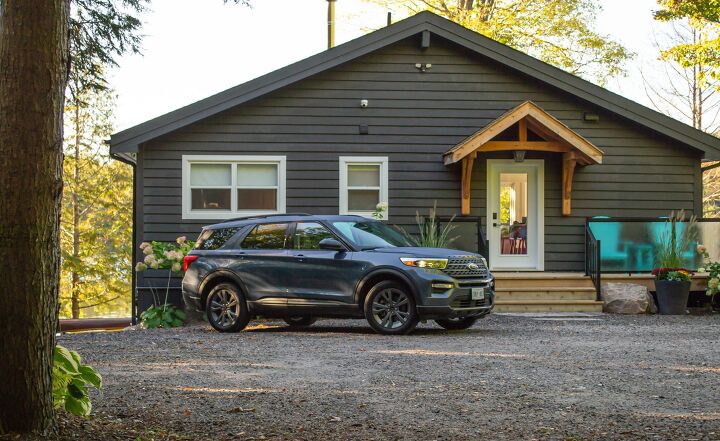




























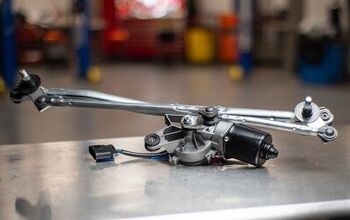

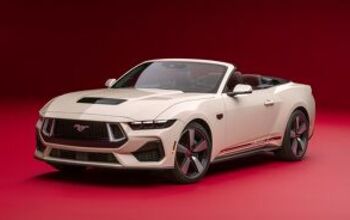
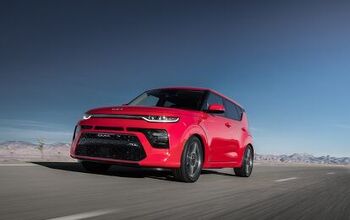
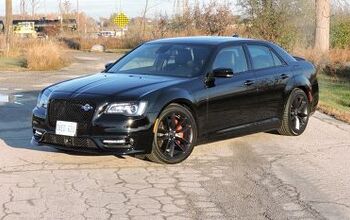





Comments
Join the conversation
My wife has a 2019 Ford Escape thats on a lease. The lease is up in June of this year. Current mileage is around 14,000 Ill have to check it. I know its way under the mileage due to my health problems she does most of the driving but the escapees to small for me as I was use to driving a truck for years We are going to be in the market for a explore to lease. Like I said we have four more months left on current lease and are up to date on it. We are both retired with good income and very good credit The model explorer we have no idea. It all depends on price